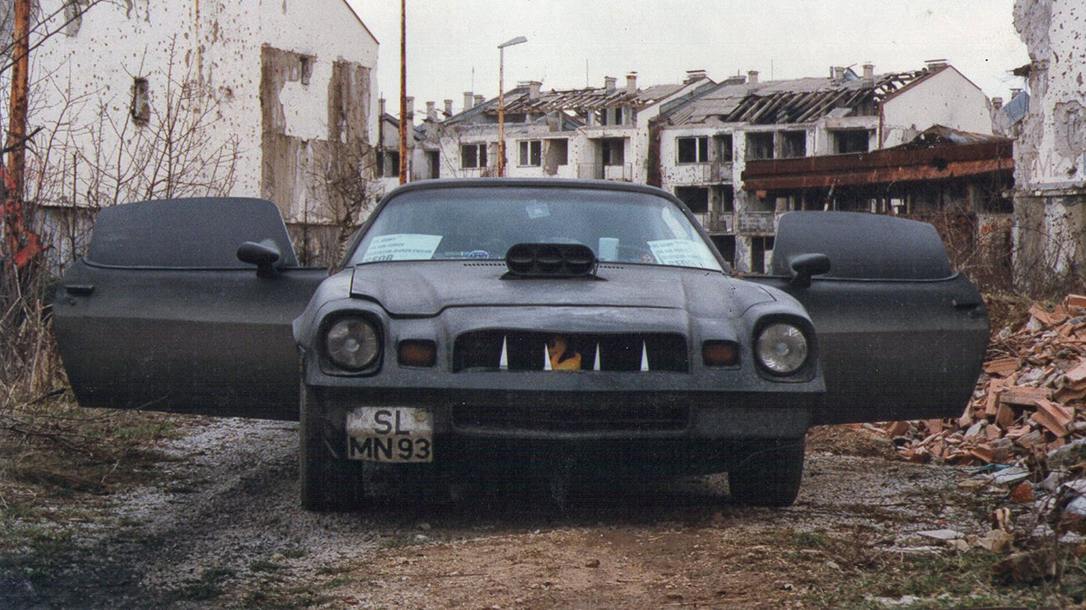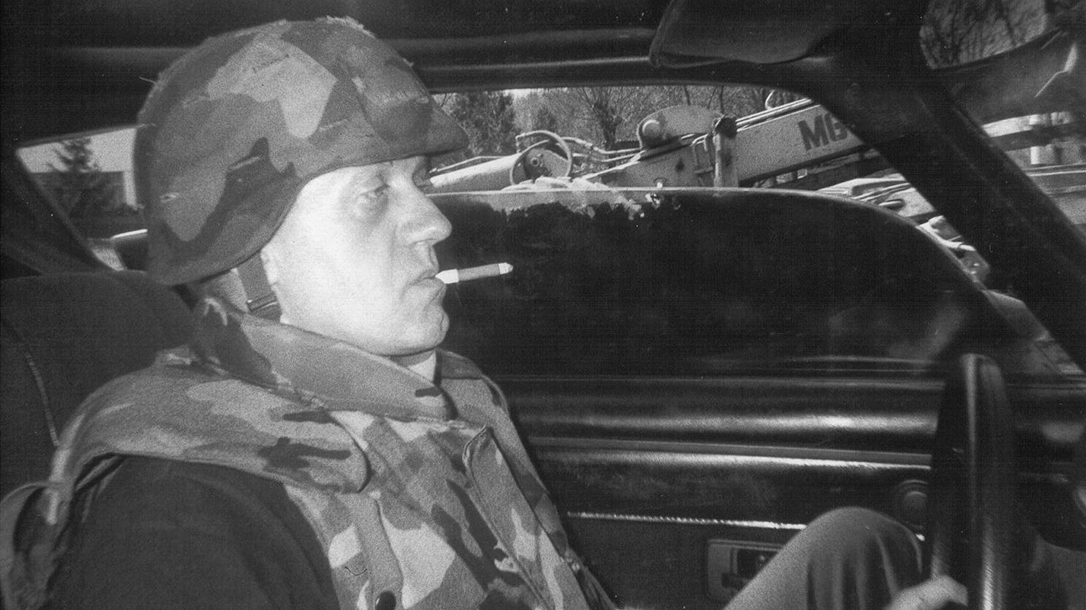A 1979 Chevy Camaro playing a big role in a war zone. Sounds made up, but it happened. The early 1990s were a turbulent time for the Balkans, to put it rather mildly. The death of dictator Josip Broz Tito saw the rise of nationalism among the member countries that made up Yugoslavia. The fall of the Soviet Union and the increased economic pain hit Yugoslavia hard. Within a few short years of the fall of the Berlin Wall, the countries of Yugoslavia descended into a violent civil war, marked by brutality inflicted upon soldiers and civilians alike.
Helge Meyer, His 1979 Chevy War Camaro & the Bosnian War
For four years, Serbs, Croats and Bosnians fought for their lives in a war that saw the resurgence of ethnic cleansing in Europe. Civilians were hit especially hard, as aid workers and Western powers tried desperately to get food, medicine and other aid to those displaced by the violence. But few of the attempts actually reached their destinations. Aside from the ongoing conflict, people were freezing and starving in the countryside, and the slow-moving supply trucks were routinely poached and picked clean.
The trucks would eventually stop attempting to make these overland runs, as most of them would be captured and seized. That’s when Helge Meyer, a high-speed, low-drag veteran of Denmark’s Jaeger Corps—a special forces unit like the U.S. Delta Force—came in. The atrocities in Bosnia moved him to try to help with an almost religious zeal. He was committed to getting help to those in need, but he wasn’t going to drive some awful supply truck. He knew the cargo had to move fast. His solution was his 1979 Chevy Camaro.

A Well Laid Plan
Meyer had been assigned to Rhein-Main Air Base in Germany during the outbreak of the Bosnian Civil War. There, he devised a way to help get the cargo to where it needed to go as fast as possible, donating his car to the effort. His Smokey and the Bandit-style solution meant going to Bosnia himself to help to reverse this humanitarian catastrophe by using one of Detroit’s finest exports—with just a few modifications.
First, Meyer removed the rear window and replaced it with a bulletproof metal panel. For the front bumper, he decided that he might have to negotiate obstacles in the war-torn streets of cities like Sarajevo, so a ram bar was added to give him the ability to clear his own path. Underneath, he installed a mine-clearing blade, since this war zone was rife with landmines. Steel plates lined his car’s undercarriage and seats for extra protection.
Final Touches
Finally, for fun, Meyer installed a cute rubber duck in the grill. This driver had a sense of humor to go with his sense of duty. The only thing the Camaro didn’t carry was a weapon, and neither did Meyer. Going in armed with only the need for speed earned him the badass nickname “God’s Rambo.”
The U.S. Air Force added Kevlar panels along the vehicle’s exterior, steel-plated windows, run-flat tires and night-vision capabilities. Nitrous-oxide boosters rounded out the special mods made to what was now referred to as the “Ghost Car.” It even had black-toned infrared-absorbing paint and heat-detection system. The original V8 engine could produce double the horsepower moving from zero to 200 mph in 13 seconds.
Well Equipped Vehicle
Despite the weight and heft of all the vehicle’s modifications, Helge Meyer’s ’79 Camaro could still carry nearly 1,000 pounds of food and materials to trapped civilians and refugees who were starving or freezing as the war ravaged their homes and possessions. His mission, his vehicle and his hardcore special forces training meant Helge Meyer could go into the mouth of hell at the wheel of his Camaro, day or night, to make sure he could save as many civilians as possible.

And he did. The car worked as planned. It took bullets from snipers, dodged the police, evaded Serb patrols and aircraft and even had to use those nitrous boosts once or twice in Fast and Furious-level maneuvers to outrun the people trying to kill him and the civilians around him. Soon enough, he learned his way and avoided the main roads while bombing the backroads. No longer wasting time evading armies, he was able to help more and more people.
Grit and Determination
With an almost religious fervor, Meyer moved materials around the Balkan war zone in the Ghost Car; his vehicle would appear for a few seconds before suddenly disappearing again, only to pop up miles away. He dodged booby traps and mines, ambushes and armies. He even communicated with NATO aircraft to give himself top cover. Armed with only the Bible and a pack of cigarettes to keep him company on his ultimate cross-country Euro trip.
To this day, he has no idea how many people he helped or how many tons of goods he moved throughout this war zone. He was awarded multiple citations and earned the undying respect of all his NATO allies. He also lived what might be the most audacious war story of the entire Balkan Conflict. All he truly knows is that what he made happen required every fiber of his being.
These days, the legendary Camaro still has most of the modifications Helge Meyer made to it, save for the infrared-defeating paint job. Currently painted orange, the car now rests inside his garage. It comes out occasionally for a peaceful spin to car shows—just two war heroes out for a stroll.
Be sure to check out our podcast Skillset Live for more badass stories of patriots like Helge! Also, get in on the conversation on our social media pages or pick up a back issue at OutdoorGroupStore.com!






















